How to use a polyurethane foam gun?
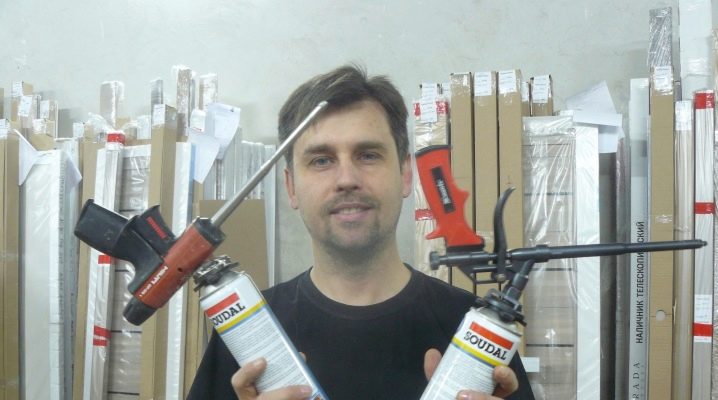
The gun for polyurethane foam is an indispensable tool when carrying out repairs. It provides economical consumption of polyurethane foam and guarantees accurate application. Its use will save money, make repairs quickly and easily.
Peculiarities
Mounting foam is required when installing door frames, plastic windows and for other purposes. If you apply it by hand, then there are many problems, so it is better to purchase a special gun for it. Modern construction equipment manufacturers offer a wide variety of foam guns. They differ in appearance and are represented by different designs.
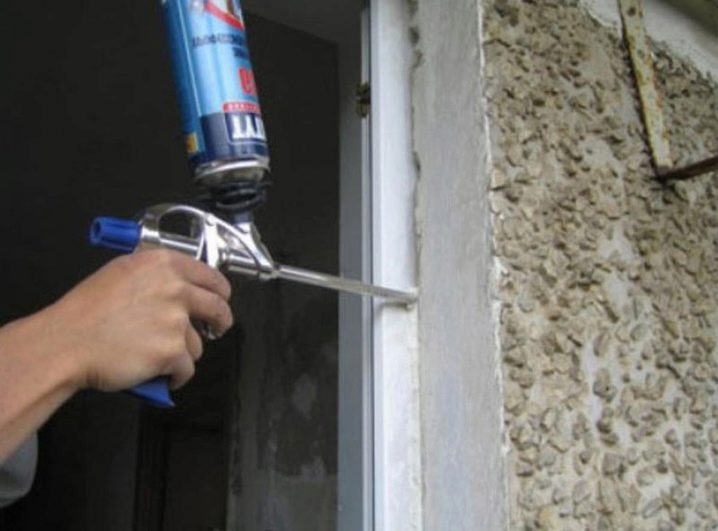
Foam cylinders are represented by a huge assortment: if you purchase a high-quality application tool, then it will fit any balloon. The polyurethane foam gun is an easy-to-use tool, but you shouldn't take it lightly. Before using it, you should take measures for your own safety. It is recommended to use the tool only with protective goggles and special gloves.
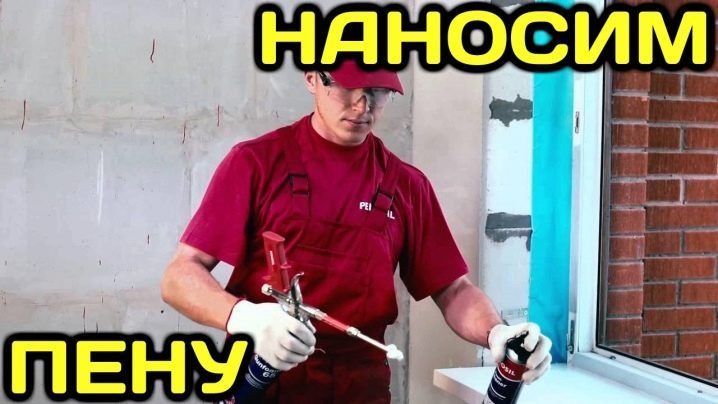
Dignity
The need to purchase a gun for polyurethane foam is due to its advantages.
- provides the ability to produce an accurate dosage of the material during use;
- provides high-quality sealing and excellent thermal insulation of seams;
- provides economical consumption of polyurethane foam; allows the use of cylinders with a sealant, even if it has already been used, and a lot of time has passed, since it prevents the foam from hardening in the supply system.
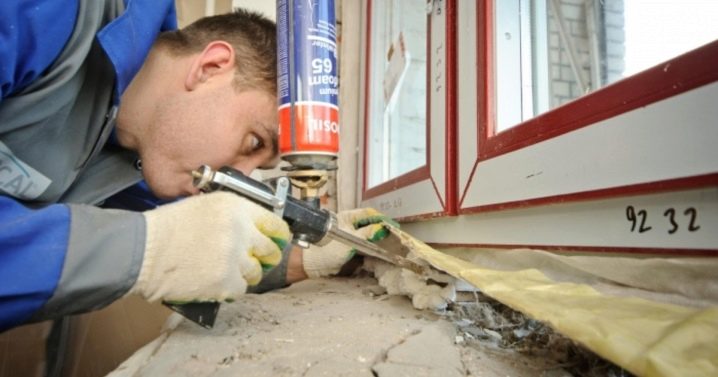
Varieties of pistols
Modern construction equipment manufacturers offer a wide range of foam guns. To choose the right tool, you should familiarize yourself with its varieties. The material of the device is of great importance. Plastic models are the most affordable because they are cheap. Manufacturers do not use metal parts, so they are not durable.
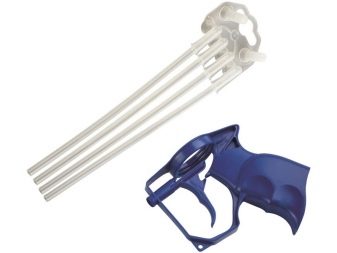
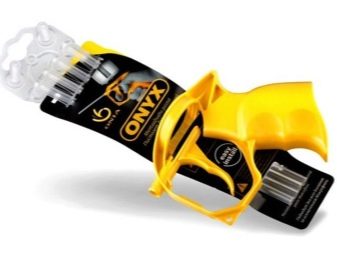
Such options quickly break down or become clogged with the assembly composition. If the plastic gun stops working, you should buy a new one as it cannot be repaired. Often, when buying a plastic pistol, a few more tubes are sold in the kit for a change. It should be understood that it is not collapsible. Even with a strong desire to clean it, it will not be possible to disassemble it.
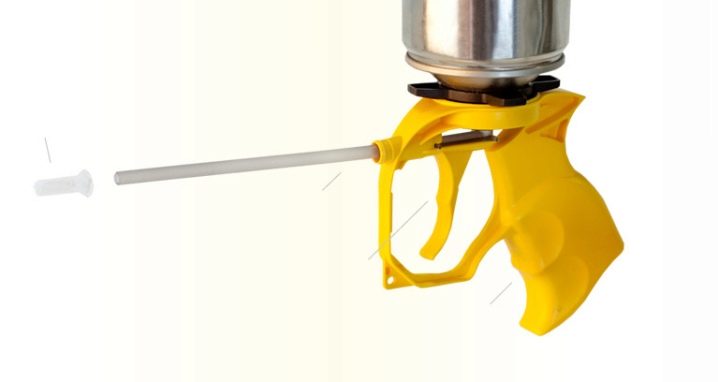
The plastic tool is durable to use. Basically, this option is the most convenient for doing a small amount of work. It is purchased by those who do not like to clean the instrument after use. A good alternative to a plastic gun is a regular plastic tube that attaches to a can of polyurethane foam. The result of the work is the same, only the pipe is cheaper. The difference is that the balloon fits in the hand differently.
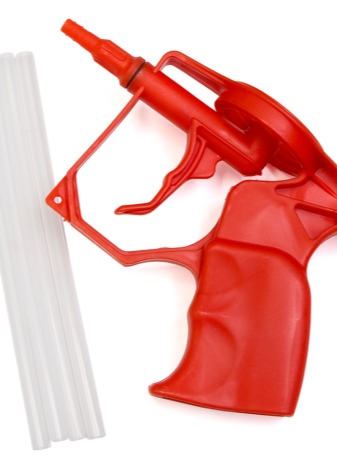

The metal foam guns are of good quality and are reusable. They can be disassembled and cleaned after use. If any kind of breakdown occurs, then they can be repaired. A high quality model will last for several years if handled with care.This option is chosen by many professionals who understand that a high-quality tool plays an important role in the performance of construction work. It allows you to do the job efficiently.

It is worth paying attention to the combined models, which are made of plastic and metal. The barrel of the pistol is made of metal, and the rest of the parts (body, grip, trigger and adapter) are made plastic. Combination instruments are lightweight and can withstand impacts. If you drop a plastic gun from a ceiling height, then it is unlikely to work.
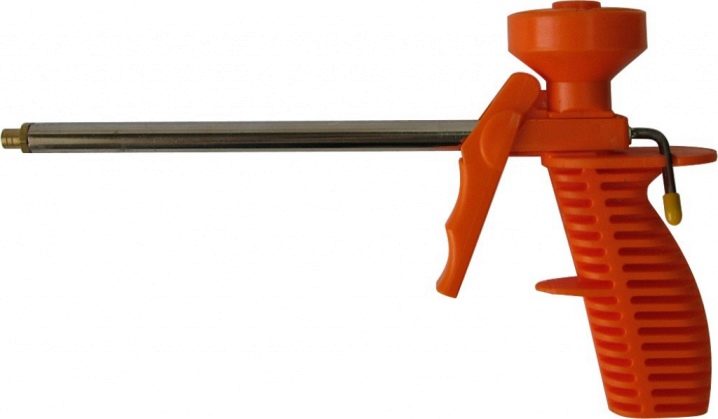
When choosing a combined model, you need to make sure that it is collapsible. If the pistol does not understand, it is not worth paying a lot of money for it, you can immediately buy the plastic version, because they will serve the same. Teflon coated models are the best. They are characterized by excellent quality, practically not prone to breakdowns, they are distinguished by a long service life and ease of cleaning. Their only drawback is their high cost.
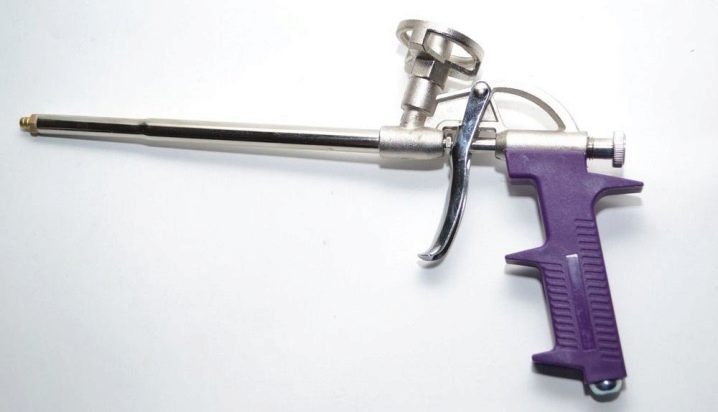
Instrument device
Foam guns are simple in design. Even expensive models, which have a huge number of parts, work according to a simple mechanism. The pistols differ in appearance and content, but they all have the same basic parts.
The main elements of a polyurethane foam gun are:
- tool body (product base);
- handle for ease of use;
- barrel (used to feed material);
- nozzle (tip of the barrel, helps the foam "shoot");

- a needle bar or locking needle located inside the barrel;
- ball reducer or adapter (for attaching a cylinder, consists of a small spring and a ball, requires special care when flushing);
- trigger (responsible for opening the valve);
- adjusting screw (secures the needle, adjusts the feed rate and amount of material).
- screw with a gasket (to protect the trigger from the leakage of foam).
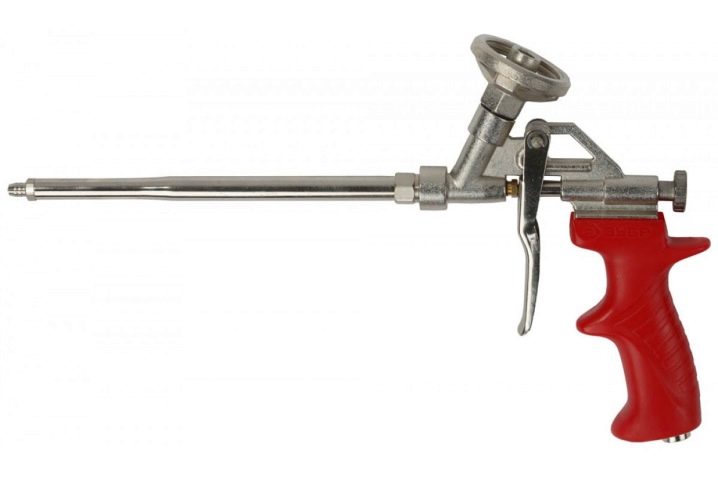
If the screw is tightened, then the foam supply is completely blocked. If the screw is loosely tightened, then the foam goes quite easily.
Instructions for use
The polyurethane foam gun is characterized by ease of use. It is designed for operational work. To use the gun correctly, you should adhere to a few simple rules that are based on the features of the tool itself and the cylinder. Shake the foam container well before use. It is enough to perform this action for 30 seconds. If work with the sealant is carried out outside in frost, the container must be warmed up before use or wait until warmed up at room temperature.
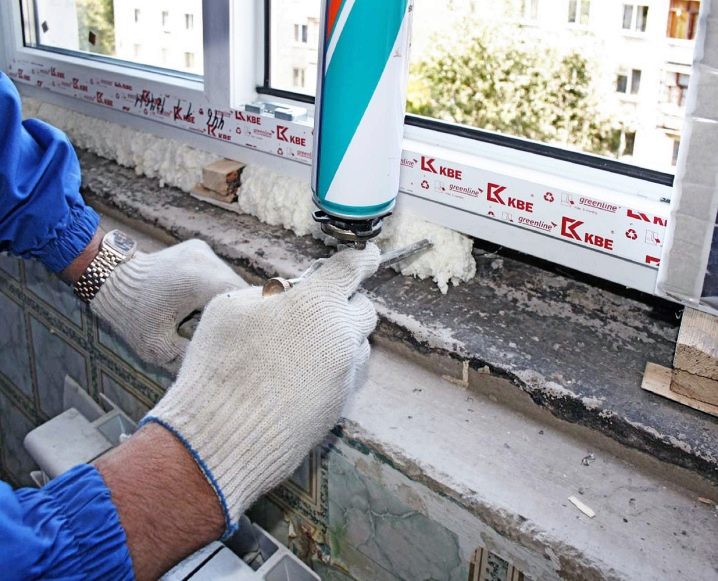
How to charge?
To use the gun, you must install it correctly:
- the cylinder must be placed on a flat surface;
- it is necessary to remove the protective cap from the sealant;
- it is necessary to put a tool on it, while the gun should be inserted from above;
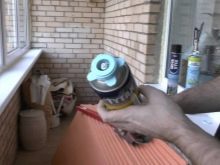

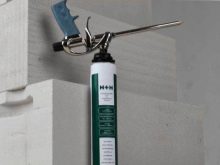
- the other one needs to hold the pistol by the handle, and the second one rotates the container with the sealant until it stops;
- it is necessary to turn the tool with the handle down, and the cylinder up to give it a working position;
- you need to turn the adjusting screw about a quarter of a turn and press the trigger with ease;
- when the foam fills the entire barrel, the gun is ready for use;
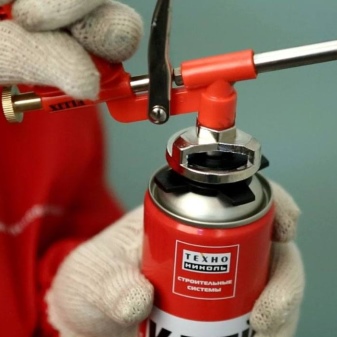
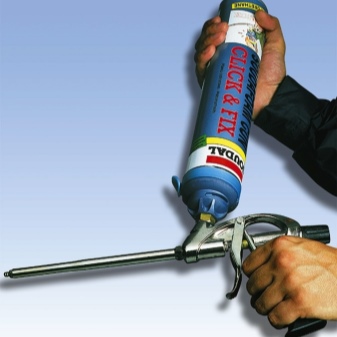
The gun set is additionally equipped with a tube, which is used to fill joints in hard-to-reach places.

How to work?
First you need to prepare the seam. It is enough to moisten it with water. These actions will improve adhesion.
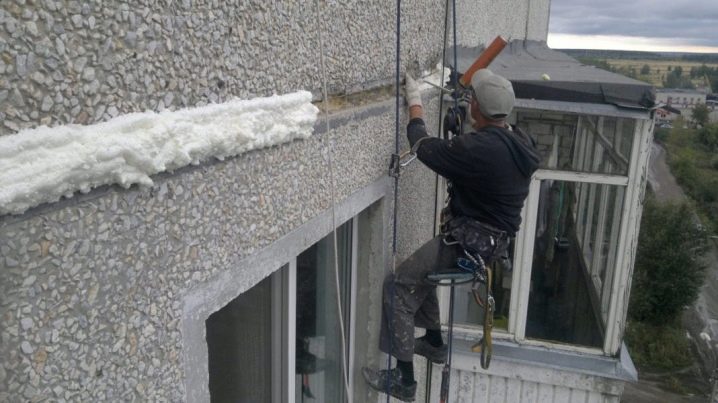
Then you can start working.
- You need to direct the tip of the tool to the seam.
- The trigger of the tool must be pulled gently to adapt how much force is needed to obtain the required foam flow.
- If it comes poorly, it is necessary to slightly tighten the adjustment screw, which is located at the back of the instrument.
- The seam should be filled exclusively from the bottom up, while performing zigzag movements.
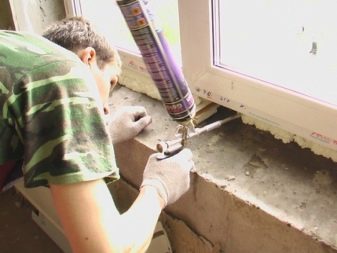

- The seam should not be complete, as foam tends to expand in volume over time. If in the future there are voids, they can be filled with an additional layer (it will take more time to cut off the excess sealant).
- When working with a long seam, the foam can change its consistency over time, so it is worth stopping and shaking the can again vigorously.
- When stopping in work, the nozzle of the tool must be cleaned of foam using a cloth soaked in solvent or special napkins. After completing the work, be sure to tighten the adjusting screw.

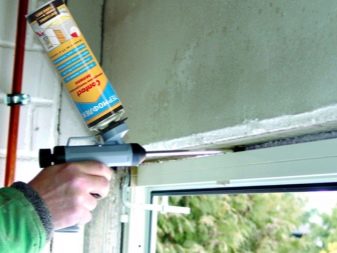
How to remove?
If you perform a large amount of work, one cylinder of polyurethane foam will not be enough. Then it is necessary to replace the empty sealant container with a new one. If no foam is already coming out of the nozzle of the tool, the container may still be under pressure. To change the bottle, you must first bleed the incomplete container. You can take a construction bucket, point the barrel at it and pull the trigger. Perform this action until the hissing sound stops.
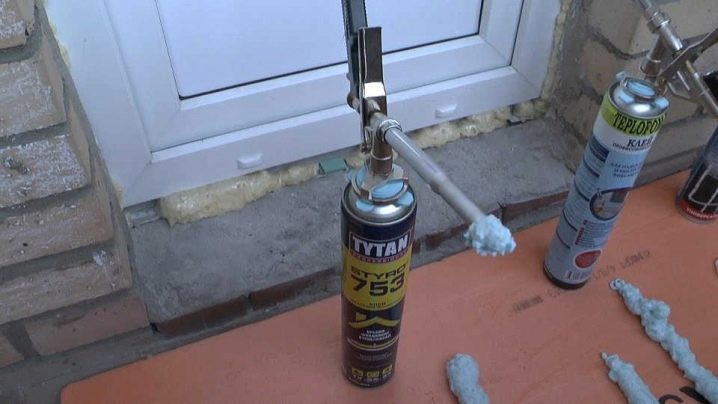
Next, the pistol must be turned with the handle upwards so that the cylinder is at the bottom. Now you can carefully unscrew the empty container. The adapter should be immediately washed off with a special solution to remove excess foam and a new bottle should be screwed on. If this is done slowly, the sealant can set in the barrel, resulting in a complete cleaning of the tool.
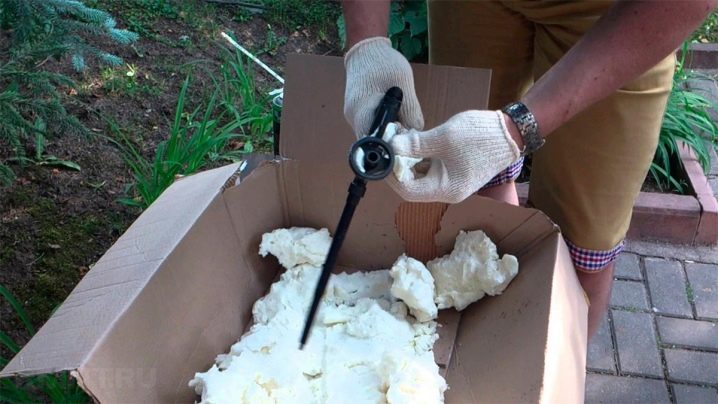
Care Tips
In practice, even an inexpensive polyurethane foam gun can produce a large number of professional sealant cylinders. It must be remembered that the working equipment does not need any outside intervention: it does not need to be disassembled for thorough cleaning.
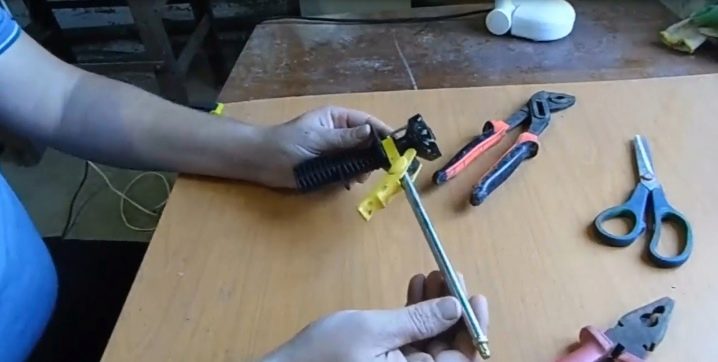
It is enough to adhere to simple care tips.
- Remove the foam container only to replace it. If the cylinder is already empty, but you do not plan to continue working, you should not remove it.
- After work, it is necessary to clean only the barrel nozzle and the shut-off valve from the sealant residues.
- When changing a foam can, always flush the adapter with a solvent to remove any sealant residue.
- If necessary, tighten the screw gasket, which is located between the stem and the trigger.

If the pistol breaks down for an unknown reason, there is no need to immediately throw it away. You can fix it yourself if you find a problem. No force is required to disassemble the instrument. If the cured sealant interferes with disassembly, solvent 646 or acetone should be used.
These liquids help to wipe off the cured foam with ease. After disassembly, you need to find what is broken, then replace the part with a new one. Before assembling, it is worth carefully lubricating all the parts of the mechanism. This will extend the life of the tool.
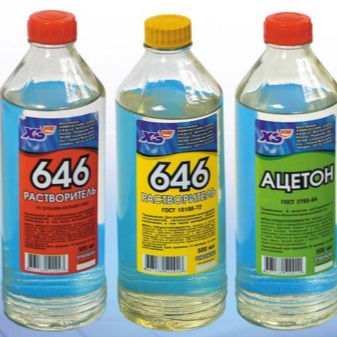
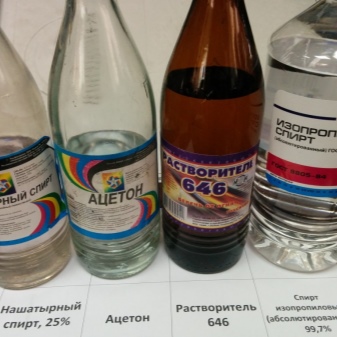
How to use the foam gun correctly, you can watch in this video.













The comment was sent successfully.